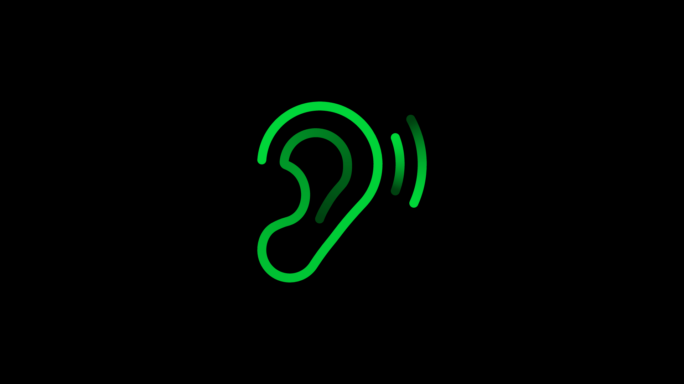Cash flow statement: How to use this financial statement
You know that for small businesses, cash is king. But how can your cash flow statement help you manage it? We break it down for you.

Of the three core financial statements, the cash flow statement is perhaps the least understood, and therefore under utilised by small business owners.
However, it paints an important picture that the others cannot: how much money your business brought in, and where it was spent.
In this article, we’ll explain exactly why this is important, the terms you need to know, and how to read one, so you can start using this statement to make informed business decisions.
Here’s what we cover:
- What is the cash flow statement?
- Why is the cash flow statement important?
- The sections of the cash flow statement
- How to read the cash flow statement
- Cash flow statement vs balance sheet vs profit and loss account
- Final thoughts
What is the cash flow statement?
Also known as the statement of cash flows, this statement illustrates how your business operations are performing.
Simply put, it reports the cash inflows and cash outflows within your business during a time period, whether that’s over a week, a quarter, or a financial year.
It also shows you the net increase or decrease in cash, and explains the causes for the changes in the cash balance.
The cash flow statement recognises three major business activities for cash flow:
- Operating activities
- Financing activities
- Investing activities.
It’s important to note that cash flow is different from profit, another useful measure of performance.
This is why a cash flow statement is generally used alongside the two other types of financial statements: the balance sheet and the profit and loss account (also known as the income statement).
There are two methods of calculating cash flow: the direct method and indirect method.
Direct method
The direct method uses the transactional information that impacted cash during the period.
For example, to calculate the operating activities’ section using the direct method, you’d take all cash collections from operating activities, and subtract all of the cash payments from the operating activities.
This is simple to do for small businesses that are using the cash method of accounting.
Indirect method
The indirect method depends on the accrual accounting method, in which your accountant records revenues and expenses at times other than when cash was paid or received.
Instead of organising transactional data like the direct method, your accountant will start with the net profit number found in the profit and loss account and make adjustments to undo the impact of the accruals and non-cash expenses (such as depreciation) that were made during the period.
Why is the cash flow statement important?
As we mentioned above, the profit and loss account includes non-cash transactions as well as accruals, so the role of the cash flow statement is to show pure cash movements for the period.
The cash flow statement measures how well your business manages its cash position.
This means it gives you a picture of how well the business generates cash to pay its debt obligations and fund its operating expenses.
The statement not only shows you how much money was spent, but where it was spent, giving more context to information that might not be apparent on the other financial statements.
Therefore, a cash flow statement is vital for forecasting future cash flows and explaining anomalies such as why the business is in a poor cash position but has high profits.
The sections of the cash flow statement
A cash flow statement is broken up into three sections:
- Cash flow from operating activities
- Cash flow from investing activities
- Cash flow from financing activities.
Let’s look at each section in the order they appear on the statement.
Cash flow from operating activities
This is the cash used in your everyday business operations.
In other words, this section reflects how much cash is generated from your products or services.
Cash receipts include the sales of all goods and services as well as other operating income such as rent, interest, and commissions received.
Cash payments are all the costs of running the business such as salaries, inventory purchases, transport costs, interest expense, and taxes.
Cash flow from investing activities
Cash from investing is the money spent on growing the business through long-term capital investment as well as the cash proceeds from selling those investments.
For example, if you buy physical assets (such as equipment) or non-physical assets (such as patents).
Cash receipts include sale of investments, sale of fixed assets, and sale of business segments.
Cash payments include the purchase of fixed assets, purchase of investments, and purchase of securities in another company.
Cash flow from financing activities
Cash from financing is funding that comes from you as an owner, investors and creditors.
Cash receipts include borrowed funds from investors, banks and other financial institutions in the form of a mortgage, business loan, bonds, and so on.
Cash payments include dividends paid to shareholders.
How to read the cash flow statement
The number at the bottom of the cash flow statement will tell you the net cash movement for the time period, also known as net cash flow.
If the net is a positive number, then cash increased over the period.
If the number is in brackets then you had negative cash flow, i.e. the business spent more than it received.
Negative net cash flow shouldn’t automatically raise an alarm without further analysis. You can determine where the cash inflows and outflows occurred by reviewing the three sections above.
For example, you could have a positive operating cash flow and a negative investing cash flow, which would generally be positive for the future because it means the business is making money and then using it to grow.
Look for trends across multiple statements over time and identify areas of strong performance as well as opportunities for improvement.
Ideally, your cash from operating activities should routinely exceed your net profit, because a positive cash flow speaks to your ability to remain solvent and grow your operations.
If your operational cash flow is negative, you can start to investigate areas where cash flow is a potential problem.
Take accounts receivable, for example. Is it taking too long for your customers to pay you?
Cash flow statement vs balance sheet vs profit and loss account
The profit and loss account, like the cash flow statement, shows changes in accounts over a set period of time.
The balance sheet on the other hand, is a snapshot showing what the business owns and owes at a single moment in time, i.e. it tells you what value your business holds at that moment.
The profit and loss account is important because it summarises your business revenues, costs and expenses, so you can ultimately understand if you were profitable.
And while profitability is an important financial measure, the cash flow statement exists to provide you with a true reflection of the cash movements during the period.
This is why to get an overall picture of your business health and performance, you need to look across all three financial statements.
Final thoughts
Your cash position determines so many of your business decisions, such as whether you can afford to expand operations, whether you need to adjust inventory levels, or whether you need to chase outstanding debtors.
Therefore, the cash flow statement is a vital tool in your toolbox.
Only this statement can tell you how well you are managing your cash position.
7 tips to supercharge your business decisions
Discover the seven powerful insights that can help to keep your business healthy, wealthy and wise.







Ask the author a question or share your advice